Soyal: Hopi Indians’ Winter Solstice Celebration And Arrival Of The Katchinas
Ellen Lloyd – MessageToEagle.com – There are many different kinds of winter solstice celebrations across the world.
The Hopi Indians of Northern Arizona celebrate Soyal and welcome the Kachinas, protective spirits from the mountains. The celebration begins on the shortest day of the year and symbolizes the second phase of Creation at the Dawn of Life
December has been held sacred for over a thousand years. To the Hopi Indians, this month is associated with the arrival of the Katchinas (Katsinam ) who bring the Sun back to the world.
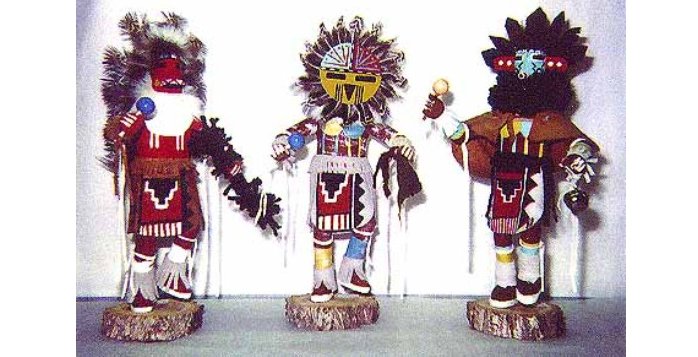
In his book, The Oxford Handbook of North American Archaeology, Timothy R. Pauketat, archaeologist and Professor of anthropology and Medieval studies at the University of Illinois writes that “according to official Hopi history Katsinam are Hopi spirit messengers who send prayers for rain, bountiful harvests, and prosperous healthy life for humankind.
They are friends and visitors who bring gifts and food, as well as messages to teach appropriate behavior and consequences of unacceptable behavior.”
There are over 250 different types of Katsinam and they all represent various beings, from animals to clouds.
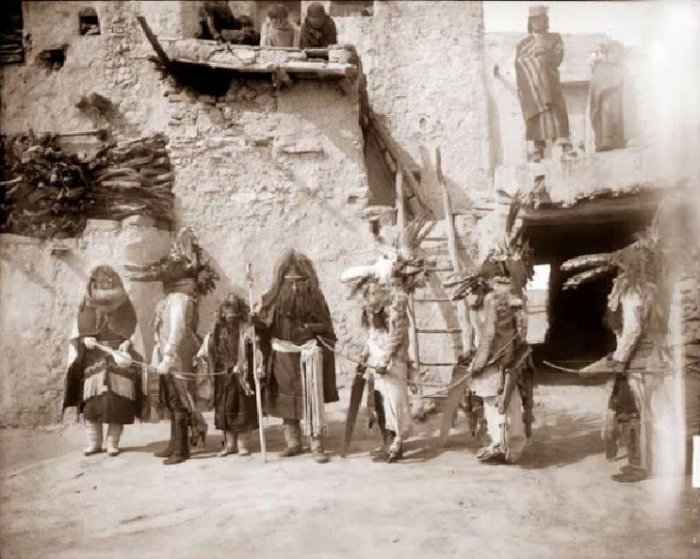
During their stay at the Hopi the Katsinam appear in physical form, and they participate in the ceremony dancing and singing. On the first and second Mesa, the katsina arrive in February at the bear Dance ceremony and on the third mesa they come in December celebrating the Soyal ceremony.
Before the Soyal ceremony can take place there are many things that need to be prepared.
The Hopi Indians make prayer sticks of tied feathers and pinyon needles called Pahos to bless the community, including their homes, animals and plants. Children receive small dolls made in the image of the Kachinas and they must learn about hundreds of Katchina spirits.
Sixteen days before the winter solstice, one of the chief kachinas enters the Pueblo.
He is dressed like an old, tired man and appears to have just awakened from a deep slumber. He sings and dance and people follow his every move. But he sings in a very low voice because the songs are sacred and not everyone is allowed to hear them.
“We Hopi are deeply religious people. We follow divine instructions and prophecies received from the caretaker of this world, Maasaw. Our religion teaches us a lifeway of humility, cooperation, respect and earth stewardship.
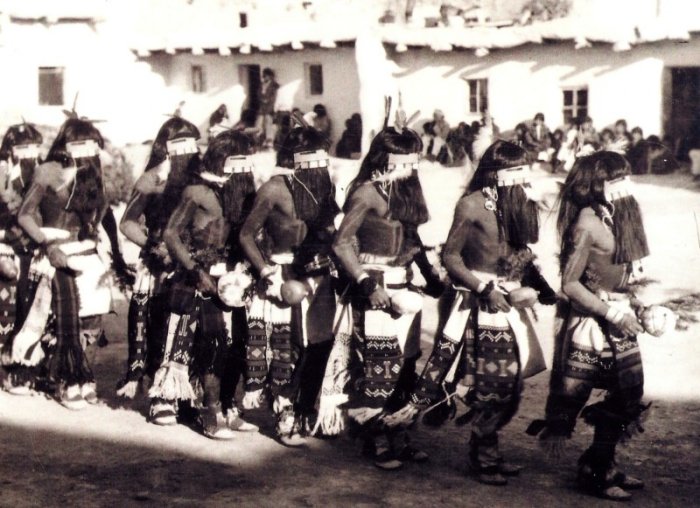
We practice our religion with different ceremonies throughout the year which are timed according to phases of the Moon and solstices of the Sun. Many of our ceremonies seek to maintain and improve our harmony with nature, enhance our prospects for good health and long, happy life, and are supplications for rain.
Through our dances, we celebrate the renewal of our life pattern, ancient immigrations, and a spiritual connection with our ancestral sites.
This together with our farming traditions, ties us both physically and ceremonially to our ancestral land, the Sun, and the cycle of the seasons,” the Hopi themselves say about their annual cycle.
The Katchinas stay with the Hopi for the first half of the Wheel of the Year until the summer solstice, when they return to their home in the mountains.
Written by – Ellen Lloyd – MessageToEagle.com
Copyright © MessageToeagle.com All rights reserved. This material may not be published, broadcast, rewritten or redistributed in whole or part without the express written permission of MessageToeagle.com
Expand for referencesTimothy Pauketat – The Oxford Handbook of North American Archaeology
Related Posts
-
 Ancient Mystery Of Peculiar Nail With Six Faces And Six Eyes – Unusual Discovery In Borgholm Castle, Sweden
No Comments | Jan 8, 2017
Ancient Mystery Of Peculiar Nail With Six Faces And Six Eyes – Unusual Discovery In Borgholm Castle, Sweden
No Comments | Jan 8, 2017 -
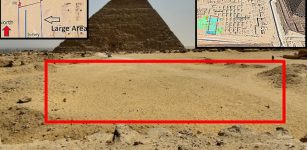 Anomalies Linked To L-Shaped Structure Detected At The Western Cemetery, Giza, Egypt
No Comments | May 16, 2024
Anomalies Linked To L-Shaped Structure Detected At The Western Cemetery, Giza, Egypt
No Comments | May 16, 2024 -
 Evidence Ravens Share A 30,000-Year-Old Relationship With Humans
No Comments | Jul 20, 2023
Evidence Ravens Share A 30,000-Year-Old Relationship With Humans
No Comments | Jul 20, 2023 -
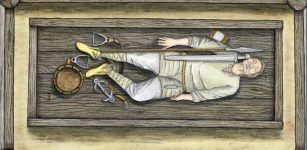 Magnificent Chamber Graves Of Four Scandinavian Warriors Discovered In Poland – The Piast Dynasty In New Light
No Comments | Jan 23, 2020
Magnificent Chamber Graves Of Four Scandinavian Warriors Discovered In Poland – The Piast Dynasty In New Light
No Comments | Jan 23, 2020 -
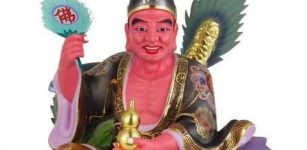 Ji Gong: Legendary Ancient Monk Who Defended People Against Injustice
No Comments | Jan 31, 2016
Ji Gong: Legendary Ancient Monk Who Defended People Against Injustice
No Comments | Jan 31, 2016 -
 Lake Huron Was Home To A 9,000-Year-Old Civilization – Underwater Structures And Artifacts Reveal
No Comments | Jun 24, 2021
Lake Huron Was Home To A 9,000-Year-Old Civilization – Underwater Structures And Artifacts Reveal
No Comments | Jun 24, 2021 -
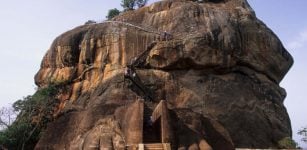 Amazing ‘Sigiriya’- ‘Lion Rock’ Fortress In Sri Lanka
No Comments | Jun 29, 2015
Amazing ‘Sigiriya’- ‘Lion Rock’ Fortress In Sri Lanka
No Comments | Jun 29, 2015 -
 Cruithne: Legendary King, His Seven Sons And The First Celtic Tribe That Inhabited British Isles
No Comments | May 27, 2023
Cruithne: Legendary King, His Seven Sons And The First Celtic Tribe That Inhabited British Isles
No Comments | May 27, 2023 -
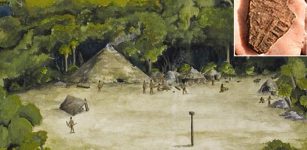 Uncovering The Lost Indigenous Settlement Of Sarabay, Florida
No Comments | Jun 10, 2021
Uncovering The Lost Indigenous Settlement Of Sarabay, Florida
No Comments | Jun 10, 2021 -
 Palnatoke – Founder Of The Jomsvikings Brotherhood, Legendary Danish Hero And Enemy Of King Harald Bluetooth
No Comments | Nov 2, 2016
Palnatoke – Founder Of The Jomsvikings Brotherhood, Legendary Danish Hero And Enemy Of King Harald Bluetooth
No Comments | Nov 2, 2016
